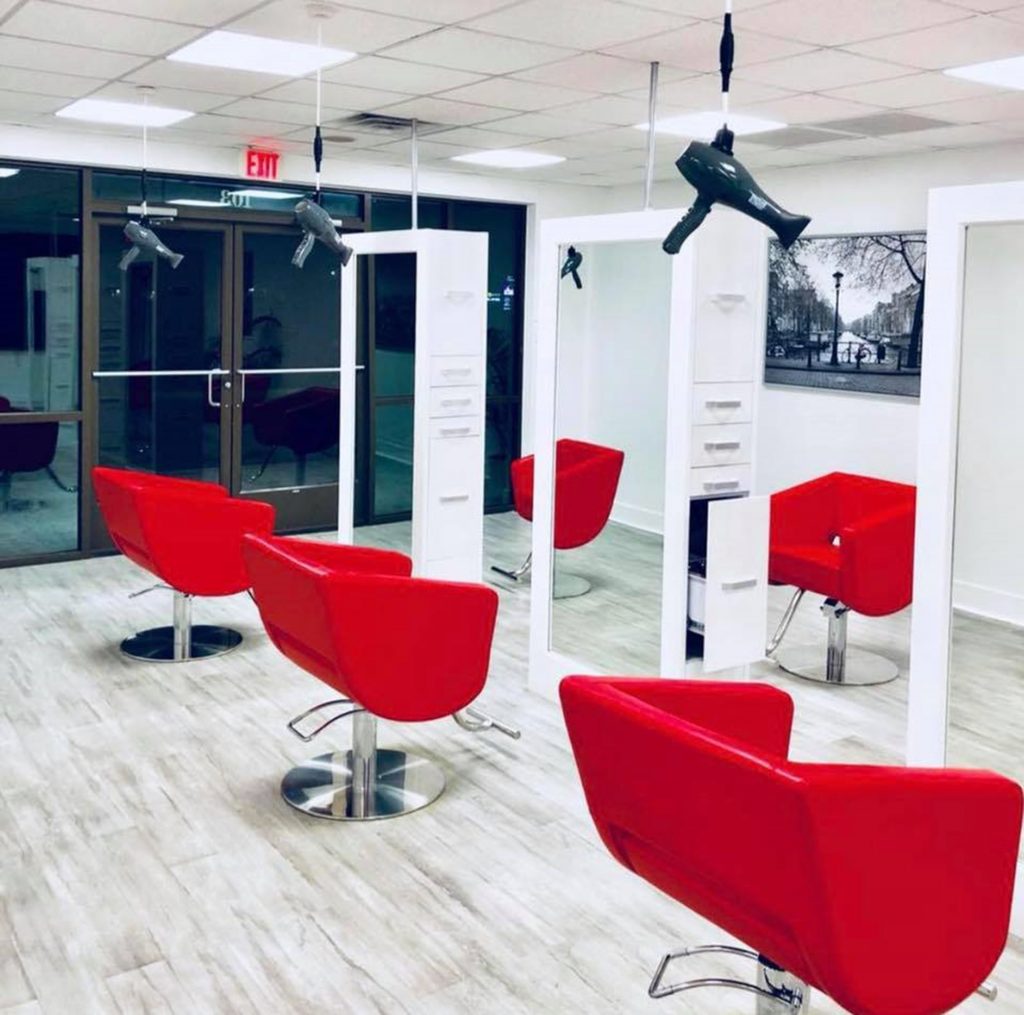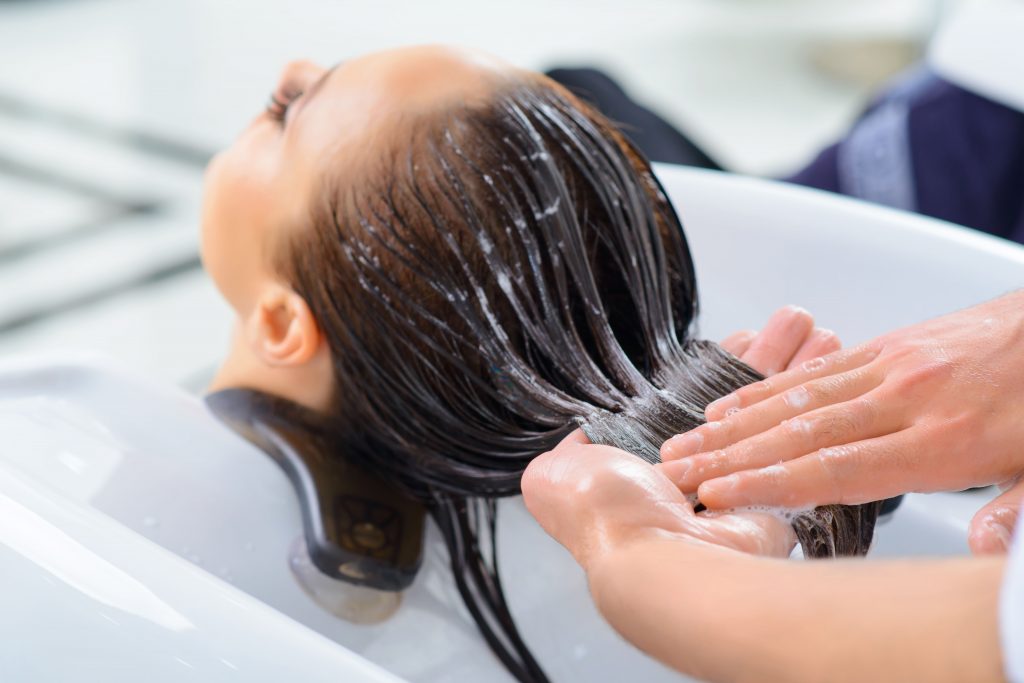
Professional Stylists: Personalized Haircare Plans Tailored Just For You
When it comes to our hair, everyone wants that perfect look that feels just right. But have you ever wondered why your go-to products don’t always give the results you hope for? The truth is, hair care isn’t one-size-fits-all—what works wonders for your friend might not do a thing for you. That’s where professional stylists come in, with their magic touch and expertise! They create personalized haircare plans that consider everything from your hair type to your daily routine, helping you achieve the style you want while keeping your locks healthy.
Personalized haircare plans by professional stylists typically include tailored recommendations for products and treatments based on your unique hair type, texture, and specific concerns. Additionally, these plans may provide styling techniques and maintenance routines to help you achieve your desired look while promoting overall hair health.
Why Consider a Personalized Haircare Plan?
A personalized haircare plan goes beyond simply choosing products from shelves; it’s about understanding the intricacies of your individual hair type, texture, and lifestyle. Think of your hair as an expression of who you are. Just like fashion choices can reflect personality, how we care for our hair should align with our unique attributes. A bespoke regimen addresses specific needs that only your hair has.
One critical reason standard products often miss the mark is that they’re crafted for a generic demographic. Have you ever purchased a trendy shampoo hoping it would resolve your frizz, only to find it left your hair worse for wear? Recognizing that each type of hair behaves differently under various conditions and product ingredients is central to effective care. For instance, while keratin may be ideal for some to enhance strength, others might find it heavy or unnecessary.
The Advantages of Tailored Solutions
Let’s break down a few scenarios: If you have curly hair—you know those luscious spirals that seem to dance? They need extra moisture to maintain their bounce and vitality. Products with heavy oils and rich conditioners tend to work wonders here. On the flip side, if oiliness is your concern, common among those with straight hair, you would benefit substantially from volumizing shampoos that keep your scalp clean without weighing down your strands. By applying tailored solutions as indicated above, individuals find not only relief from pressing issues but also enjoy healthier-looking and feeling hair. This focus on individualized care allows for not just improved appearance but also empowers you to take charge of your personal style journey.
The Role of a Professional Stylist
Professional stylists play a pivotal role in transforming your hair from something ordinary into a true reflection of your personality and lifestyle. They are not just there to give you a haircut or color; they are your partners in making sure every aspect of your hair contributes positively to your overall appearance. Their unique blend of artistry and technical skill allows them to assess and understand the nuances of your hair like few others can.
- In-Depth Consultations: The relationship begins with an in-depth consultation where the stylist takes the time to get to know you and your hair on a personal level. During this essential first step, they will assess the current condition of your hair and discuss your specific goals, whether it’s achieving a certain style or remedying damage from previous treatments. A stylist’s expertise shines here as they identify underlying issues that may be harmful to your hair’s health. For instance, frequent heat styling could have led to dryness or split ends; a professional includes this critical observation in their recommendations. This nuanced understanding is vital because it allows the stylist to leverage their knowledge of hair biology and product chemistry, enabling them to recommend treatments tailored specifically for you. They consider factors such as scalp health, moisture levels, and the porosity of your hair to suggest products that will not only enhance its appearance but also promote its long-term vitality.
- Assessing Hair Type and Texture: Recognizing that all hair is not created equal, professional stylists focus on categorizing your hair type—whether it’s straight, wavy, curly, or coily—and assessing its texture, which encompasses everything from fine to coarse strands. This step is akin to having a customized workout plan tailored just for you; it ensures optimal results based on your unique traits. Stylists also stay updated on industry trends and innovations in haircare products tailored for various textures, ensuring they provide the most effective solutions available. This dedication enables them not just to create great styles but also to advocate for ongoing care strategies that keep your tresses looking vibrant long after you leave the salon. Much like personal trainers who monitor progress over time, professionals remain invested in checking up on your hair journey to help you achieve lasting benefits.

Assessing Hair Type and Texture
Understanding your hair type and texture is essential for creating a personalized haircare regimen that truly meets your needs. Hair types are traditionally categorized into four main groups: straight, wavy, curly, and coily. Each of these categories has its own unique characteristics that affect how you care for it. For instance, straight hair tends to lie flat against the scalp, which allows natural oils to distribute evenly, whereas curly hair often struggles with dryness since these oils have a more challenging time traveling down the shaft. This means that while fine, straight hair might need volumizing shampoos and conditioners for lift, thicker, curly hair might thrive on richer creams that help lock in moisture. Recognizing these differences can be invaluable.
Hair Porosity and Elasticity
Moving beyond just identifying the type of hair, assessing hair porosity becomes crucial. Porosity refers to how well your hair can absorb and retain moisture. High-porosity hair tends to soak up water quickly but loses it just as easily, often leading to frizz. On the other hand, low-porosity hair resists moisture absorption, making it feel dry even after conditioning. This nuanced understanding allows stylists to recommend products based on how your hair behaves when it comes into contact with water. Similarly, evaluating elasticity offers further insights into hair health. Elasticity measures how much your hair stretches before breaking. If your strands snap easily when pulled, that’s a sign of low elasticity, often linked with damage or dryness. Conversely, if they bounce back readily, their elasticity is likely healthy. By addressing both porosity and elasticity in a tailored plan, you equip yourself with powerful tools to maintain vibrant and resilient locks.
Having grasped the importance of classification, it’s time to shift focus toward another pivotal area—the overall health of your scalp—which is equally vital in any tailored care routine.
Importance of Scalp Health
Scalp health is frequently overlooked but it is crucial for maintaining healthy hair. Just as a garden requires nutrient-rich soil for plants to flourish, your hair follicles depend on a clean and healthy scalp environment to thrive. When we neglect our scalps, we create an opportunity for various problems to arise that can lead to weakened or unhealthy hair.
Common Scalp Issues
- Dandruff: This flaky condition not only affects your appearance but can also disrupt the overall balance of your scalp.
- Seborrheic dermatitis: Characterized by red, inflamed patches, this chronic condition can lead to discomfort and excessive shedding.
- Psoriasis: A more severe skin condition that can manifest on the scalp, causing thick, crusty patches that might even extend beyond the hairline.
- Excessive oiliness or dryness: Both ends of the spectrum can trigger problems such as clogged pores or brittleness in hair strands.
These issues can contribute to hair problems if left untreated. For example, an oily scalp may lead to clogged hair follicles, impeding hair growth, while a dry scalp often results in flakiness and irritation. Treating the scalp with the appropriate products—whether it’s medicated shampoos or nourishing treatments—can therefore prevent many hair issues before they worsen, keeping both your scalp and hair in optimal condition.
Scalp Treatments
Professional scalp treatments like exfoliating scrubs or hydrating masks can address specific concerns effectively. Think of these treatments as routine maintenance; just like you wouldn’t neglect changing the oil in your car, routinely giving your scalp some TLC is equally important. An exfoliating scrub helps remove dead skin cells and product buildup, while hydrating masks provide essential moisture. Maintaining a healthy scalp ensures that hair follicles function optimally, promoting stronger, healthier hair growth. Clean and well-nourished follicles are less likely to be damaged by environmental stressors or poor hygiene practices. The result? Luscious locks that aren’t just beautiful but also resilient against daily wear and tear.

Customizing Your Haircare Routine
A personalized haircare routine involves selecting the right products and practices that cater directly to your hair’s specific needs. To achieve this level of customization, you need to consider several factors that influence the condition and appearance of your hair. Think of it like building a wardrobe; you wouldn’t wear what’s out of style or what doesn’t fit well—it’s about wearing what works for you.
Daily and Weekly Regimens
Navigating through the maze of hair care happens best with guidance.
- Consultation With a Stylist: Stopping by your salon for an in-depth discussion about your lifestyle and hair goals can set the foundation for everything else. Whether your days involve gym workouts or boardroom meetings, your hair doesn’t have to compromise. Stylists often have insights into not just what looks good but also what functions best for people like you.
- Product Selection: Choosing shampoos, conditioners, and styling products based on professional recommendations provides you with ingredients suited specifically to your hair type. This is crucial because not all products advertise their suitability accurately; a stylist can give clarity based on hands-on experience.
- Daily Care: Imagine incorporating gentle cleansing and conditioning techniques into your morning rituals. This could be as simple as selecting sulfate-free cleansers or using a lightweight conditioner that won’t weigh down fine hair. Such choices enhance everyday manageability while protecting the integrity of your strands.
- Weekly Treatments: Think about dedicating time to pamper your hair with nourishment. Deep-conditioning masks crafted from high-quality ingredients can work wonders if applied regularly. Additionally, professionals may offer treatments like keratin or protein sessions tailored specifically for your unique texture. These regular appointments elevate your hair beyond mere maintenance into full-fledged rejuvenation.
- Styling Practices: Finally, consider adjusting styling practices that prioritize the health of each strand while helping you achieve desired looks. It may be tempting to crank up the heat on your styling tools, but many discover that this practice leads to long-term damage and breakage. Instead, safeguarding your tresses with heat protectants and minimizing high temperatures can keep them vibrant for longer periods.
Benefits of Professional Products and Treatments
Investing in professional hair care products and treatments offers significant advantages over drugstore alternatives. These products are formulated with high-quality ingredients that enhance hair health while avoiding harsh chemicals that can cause long-term damage. Professional stylists also provide personalized recommendations, ensuring your hair receives exactly what it needs. Below are the key benefits of using professional hair care products and treatments.
- Premium Ingredients for Optimal Hair Health: Professional hair care products are formulated with high concentrations of active ingredients that nourish and strengthen hair. These include keratin for reinforcing hair structure, biotin for promoting growth, and rich natural oils for deep hydration. Unlike drugstore alternatives, these high-quality formulations provide long-lasting benefits, ensuring your hair remains healthy and vibrant over time.
- Free from Harsh Chemicals: Unlike many over-the-counter options, professional products are often free from harmful additives like sulfates and parabens. These chemicals can strip the hair of natural oils, leading to dryness, breakage, and scalp irritation. By choosing professional products, you’re opting for a gentler solution that preserves the integrity of your hair and scalp.
- Long-Term Investment in Hair Health: Professional hair care products work to maintain and improve hair health over time rather than offering temporary fixes. They help retain moisture, prevent excessive breakage, and strengthen hair from within. This investment ensures that your hair remains resilient, shiny, and manageable for years to come.
- Customized Hair Care Solutions: Professional stylists assess your unique hair type and needs before recommending the best products and treatments. Whether you require extra moisture for dry strands or protein treatments for weak hair, this personalized approach ensures optimal results. Having a tailored haircare plan means your hair gets exactly what it needs at any given time.
Choosing professional hair care isn’t just about luxury—it’s about making a smart investment in your hair’s long-term health. By using high-quality ingredients, avoiding harsh chemicals, and receiving personalized recommendations, you can achieve stronger, healthier hair. With expert guidance and scientifically formulated products, your hair will not only look its best but also maintain its strength and vitality for years to come.
Personalized Haircare Plans at Salon Voss in Short Pump, VA
Great hair starts with the right care, and at Salon Voss in Short Pump, VA, we create personalized haircare plans designed just for you. Our expert stylists assess your hair’s unique needs, from texture and color to overall health, crafting a customized regimen that keeps your locks strong, vibrant, and beautiful. Whether you’re maintaining a fresh color, repairing damage, or enhancing natural shine, we provide professional recommendations and top-tier products to achieve your hair goals. Request an appointment today and give your hair the care it truly deserves!

 Request An Appointment
Request An Appointment